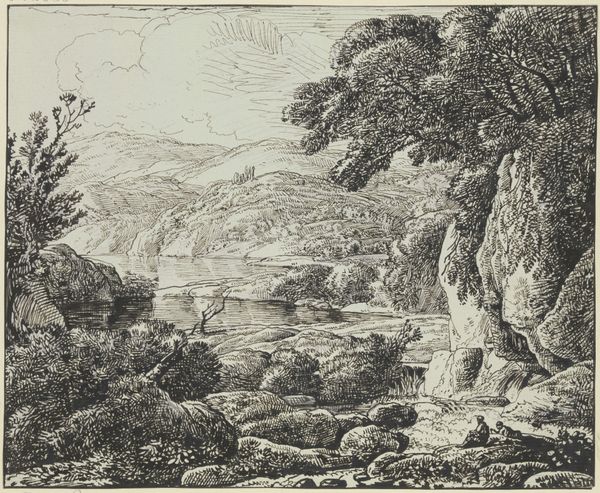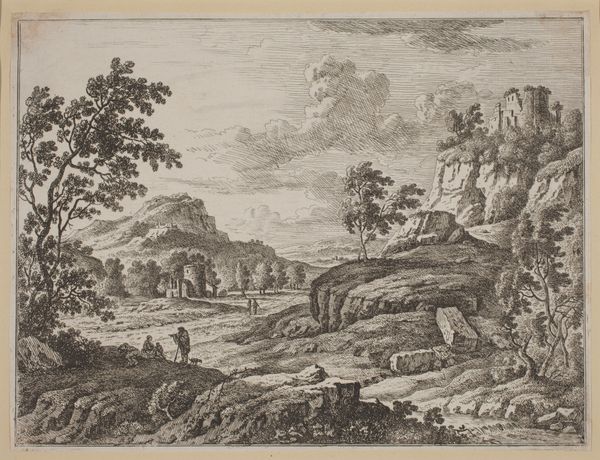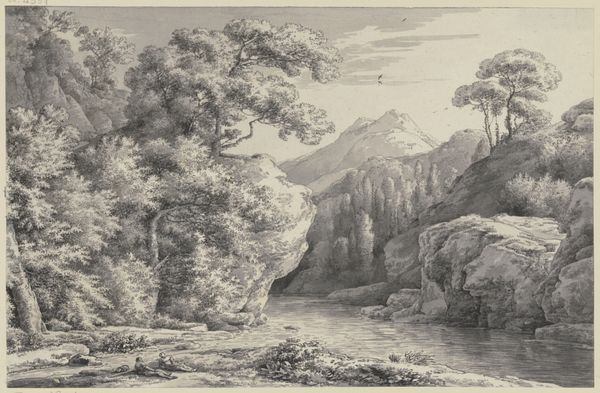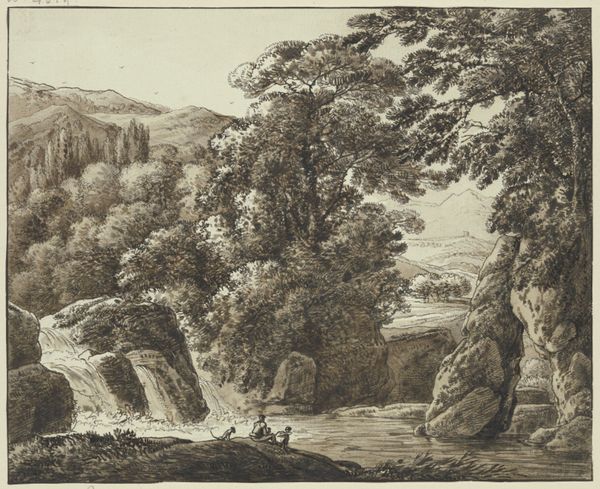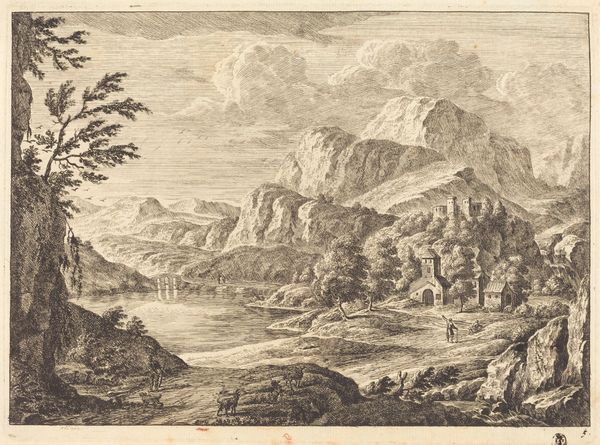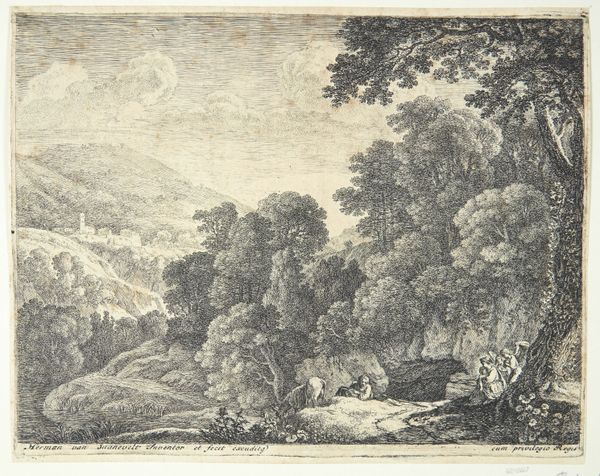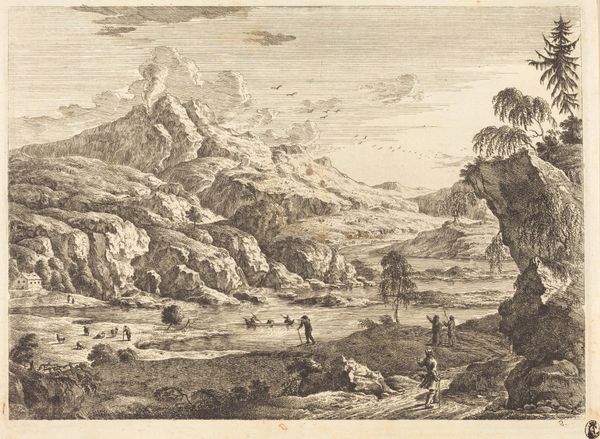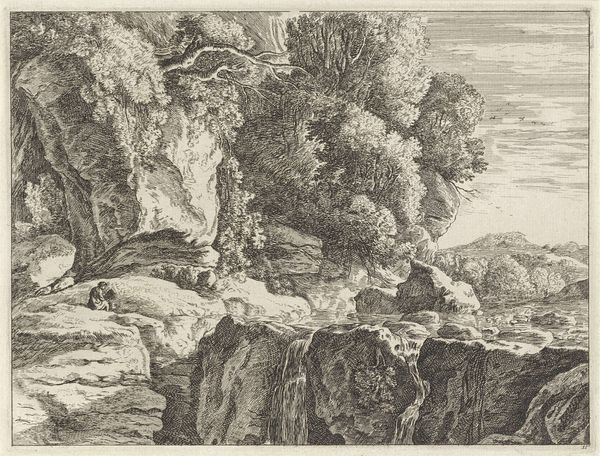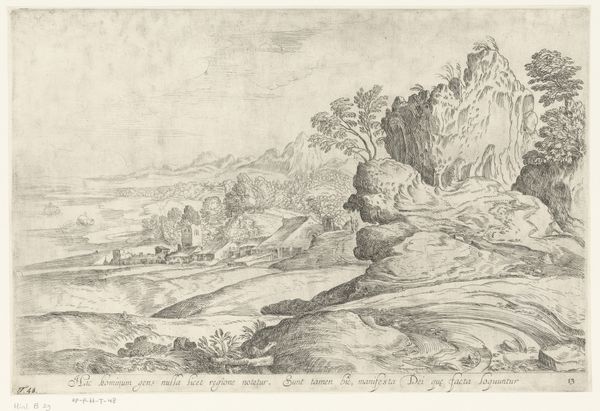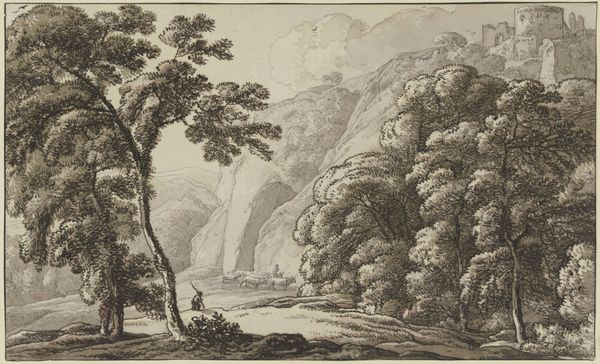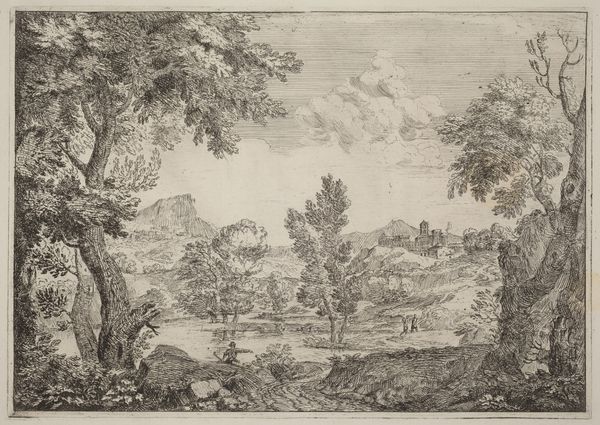
drawing, ink
#
drawing
#
landscape
#
figuration
#
ink
#
romanticism
#
15_18th-century
#
line
#
cityscape
#
picturesque
#
realism
Copyright: Public Domain
Curator: Before us is "Mountainous Landscape with River and Bridge" by Franz Kobell. It’s an ink drawing. Editor: My initial reaction is of serene melancholy, actually. The soft, muted tones evoke a dreamlike, almost elegiac quality. Curator: Note the careful rendering of forms; observe how Kobell employs hatching and cross-hatching to build up volume and texture, creating a detailed and intricate landscape. He also shows how different the styles are across time. The linear qualities evoke Romanticism but can also stand for realism. Editor: Precisely, it speaks to the way rural life was aestheticized and, at times, idealized by privileged classes, removed from the hardships actually endured in such environments. Landscape becomes a backdrop for the leisurely classes and their escapism. Notice the city built within the mountains, hinting at human touch. Curator: Yes, the landscape isn’t simply a ‘natural’ vista, it's also infused with cultural meaning through its relation to Romanticism and how that manifests formalistically, through specific line qualities or compositional structures. Editor: I wonder what stories are absent from this idyllic image? Who labored to build that bridge? What communities were displaced to create such a landscape? We must question the historical context and dominant narratives. Curator: While those contextual readings are important, I also appreciate the artist’s technical skills, from the modulation of line weight to create atmospheric perspective to the strategic deployment of chiaroscuro to enhance the illusion of depth. It stands apart from how artworks are produced today. Editor: And considering that, can we be neutral about this? It’s about unearthing those silenced histories and resisting visual pleasure and complicity. I find value in appreciating the art object, while contextualizing the themes it may bring up to us. Curator: Ultimately, Franz Kobell’s landscape offers a compelling intersection of the aesthetic and the socio-political. I believe we have much to think about here. Editor: Agreed. It serves as a powerful reminder of art’s capacity to reflect, and to challenge, dominant perceptions.
Comments
No comments
Be the first to comment and join the conversation on the ultimate creative platform.
